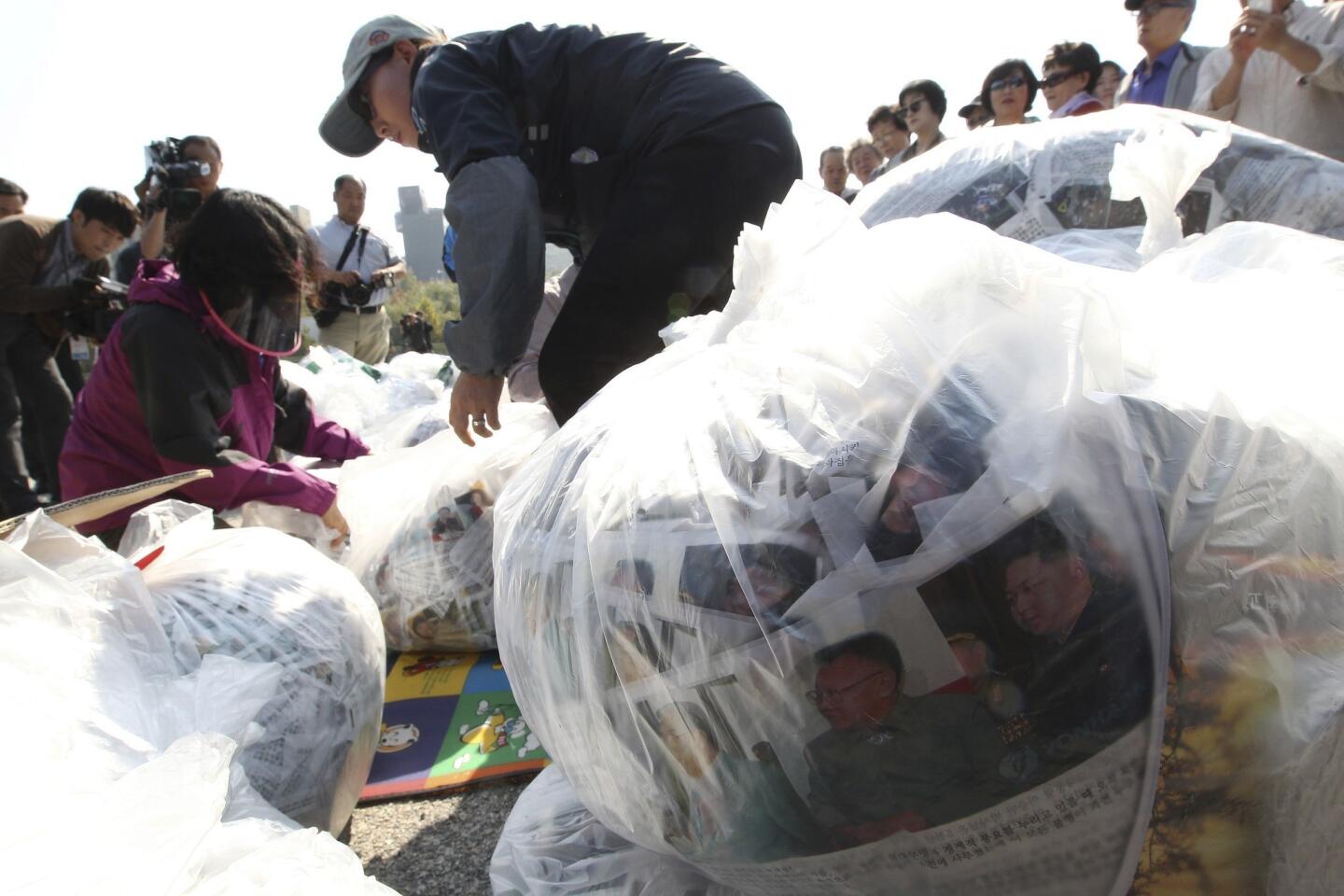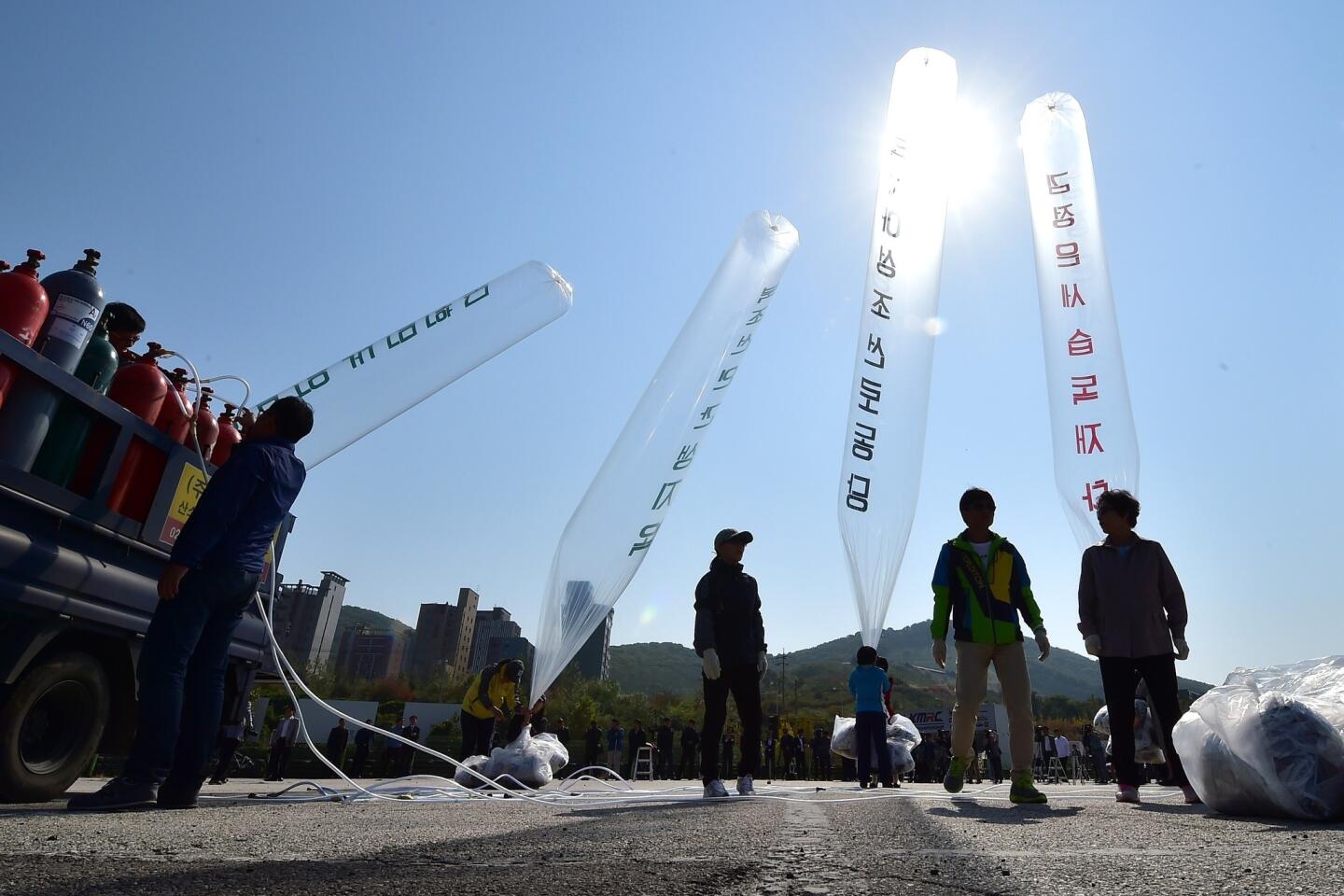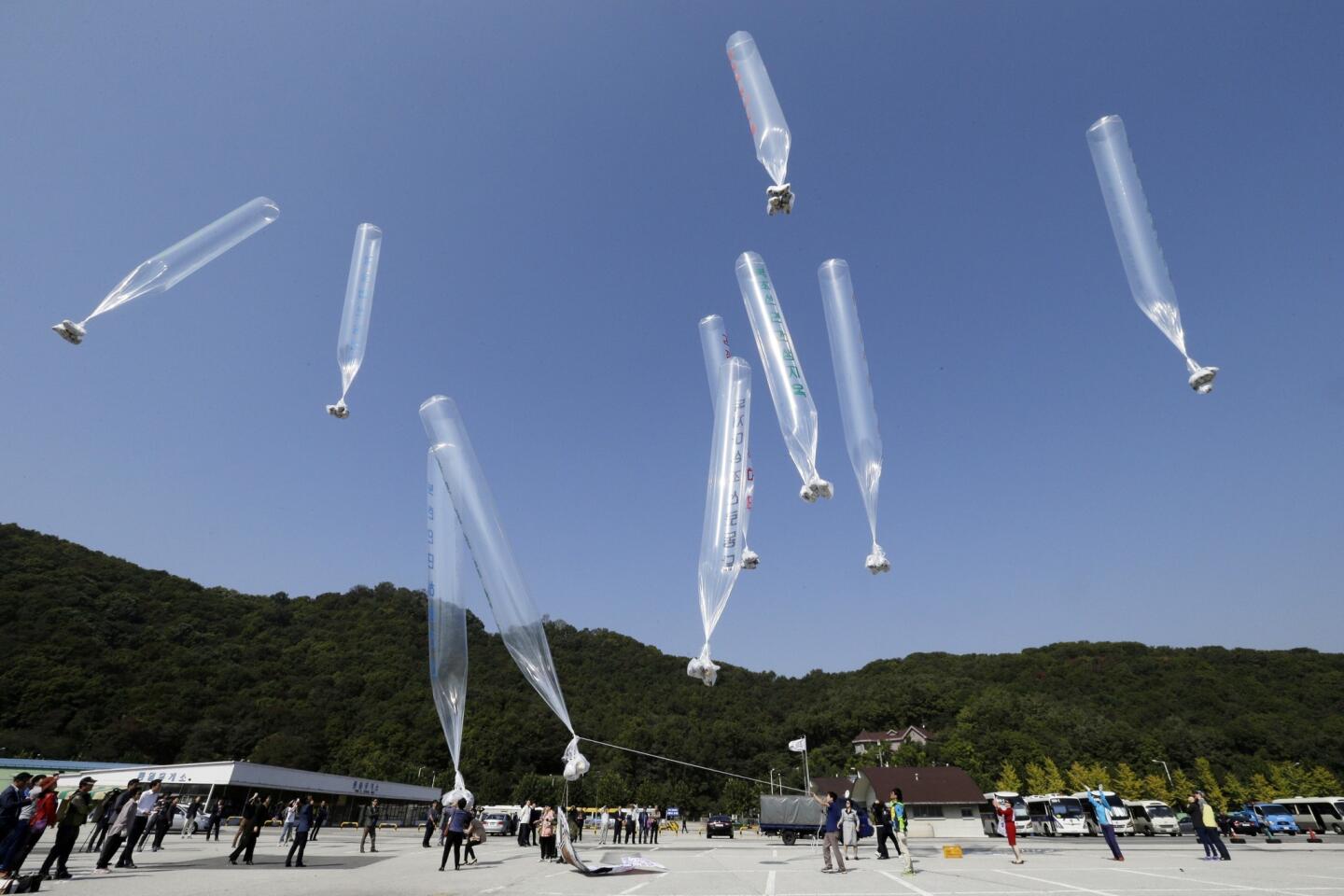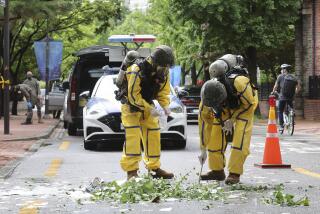Kim Jong Un, out of sight for 37 days, is a no-show at ceremony
- Share via
Reporting from Seoul — Speculation over the health and whereabouts of North Korean leader Kim Jong Un grew Friday after he apparently did not attend ceremonies marking an important national holiday. The young head of the reclusive country has not appeared in public since he was seen at a concert Sept. 3.
Oct. 10 is the anniversary of the ruling North Korean Workers’ Party, and in his first two years in power, Kim marked the occasion by making midnight visits to the mausoleum in the capital, Pyongyang, where the bodies of his father and grandfather, both former leaders, are kept in state.
But in its reports on the holiday, the state-run Korean Central News Agency did not make any mention of Kim, believed to be 31, participating in events. He also missed a celebration for Foundation Day on Sept. 9, another important holiday on the North Korean calendar.
“Today was a crucial day for him to return. More and more questions are mounting and his absence inevitably leads to uncertainty about who’s leading the country,” said Leonid Petrov, a researcher in Korean studies at Australian National University.
Kim is overweight and has become noticeably heavier since he came to power in December 2011. He is a smoker and reputedly has tastes for liquor and high-calorie food.
Earlier this year, he was filmed walking with a noticeable limp at a state function, and in a rare admission of vulnerability, North Korea’s official media reported in late September that he was struggling with unspecified physical “discomfort.”
On Friday, an unnamed source told Reuters that a leg injury was keeping Kim out of public view. The source said Kim pulled a tendon after joining a military drill he had been inspecting.
On Oct. 4, a delegation of senior North Korean figures, believed to be the most powerful officials in the country after Kim, made an unexpected visit to South Korea to attend the closing ceremony of the Asian Games. They borrowed Kim’s plane for the trip, and Kim’s regards were reportedly conveyed to South Korean President Park Geun-hye. Analysts have said that in North Korea’s totalitarian system, such a trip could not have gone ahead without the top leader’s approval.
Though Kim is young and far less experienced than the men of his father’s generation who make up the government’s top ranks, he has the unmatchable legitimacy of being part of the ruling Kim bloodline as grandson to founding leader Kim Il Sung.
His uncle by marriage, Jang Song-thaek, was widely considered North Korea’s second most powerful figure and a possible threat to Kim’s control, until Jang was suddenly purged and executed last year. Jang’s ouster was carried out in an unusually visible manner, with him being handcuffed and dragged out of a large meeting, possibly as an implicit warning to anyone else in North Korea with ambitions of building power to challenge Kim’s control of the country.
Though Kim’s prolonged absence has spurred rumors of a power struggle in Pyongyang, there is no clear sign that a serious challenge to his rule has emerged. On Friday, South Korea’s Ministry of Unification, its body for relations with the North, said in a briefing that, according to the South Korean government’s intelligence, Kim’s rule has not been disrupted.
“There’s no sign of any political upheaval in Pyongyang. Just the opposite, all the evidence shows that things are going along normally,” said John Delury, a North Korea watcher at Yonsei University in Seoul.
Still, the extended absence is out of character for Kim, who has been a highly visible leader whose moves are usually closely reported in the North Korean state media. “This is very unusual for Kim Jong Un, as he’s been this hyperactive young leader who tries to show that he’s involved in everything that’s going on,” said Adam Cathcart, a lecturer of East Asian history at the University of Leeds.
Though Kim’s absence is unusual for him, it’s not unheard of in the history of North Korea’s ruling dynasty. His father, Kim Jong Il, who died in late 2011, regularly did not appear in public for months at a time, often due to his deteriorating health.
Also Friday, South Korea’s military announced that North Korea fired machine guns at activists in South Korea who were releasing balloons filled with propaganda leaflets over the border.
A source in the South Korean military, speaking by telephone on condition of anonymity, said no casualties or damage occurred, and that the South did not return fire but fired warning shots and broadcast a message over loudspeakers imploring the North to refrain from firing.
The balloons are usually filled with leaflets critical of the North Korean government, as well as socks and chocolate snacks. Pyongyang routinely objects to such criticism, and has recently called on the South Korean government to take action to prevent the activists, often North Korean refugees, from sending the balloons. Seoul has responded that it cannot prevent the release of the leaflets because they represent free speech.
Borowiec is a special correspondent.
More to Read
Sign up for Essential California
The most important California stories and recommendations in your inbox every morning.
You may occasionally receive promotional content from the Los Angeles Times.


















